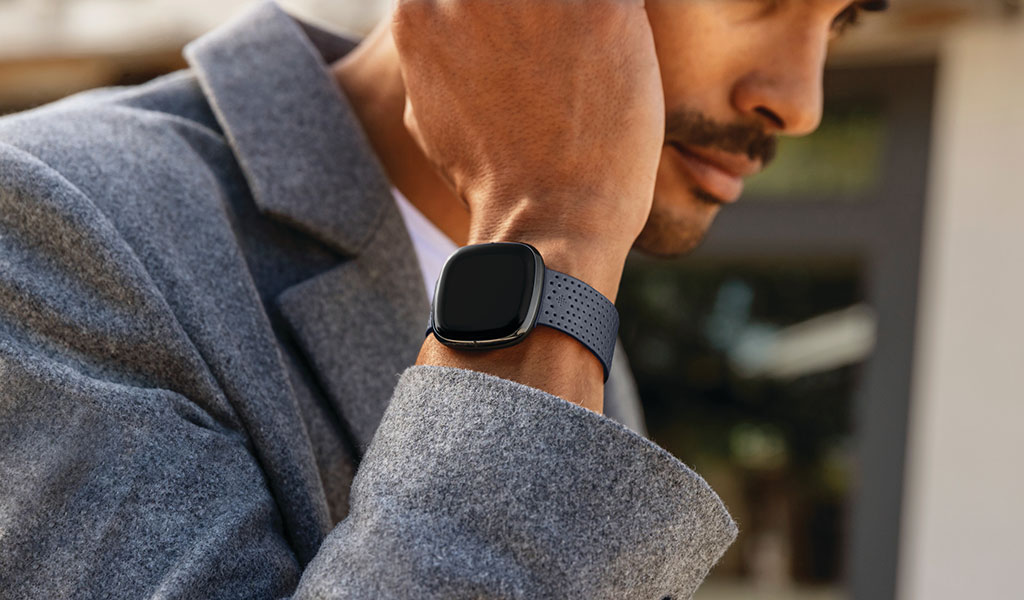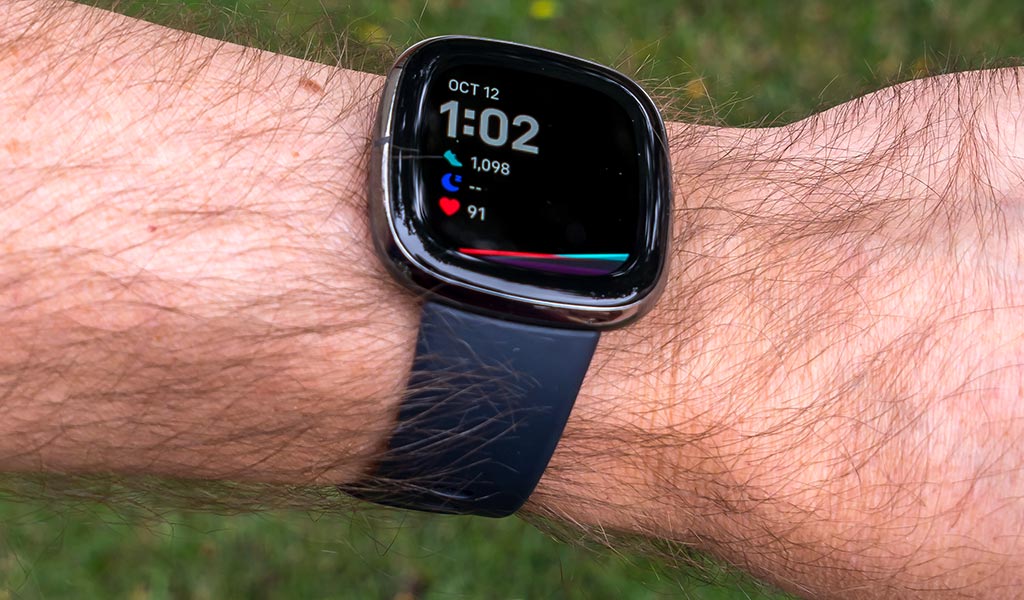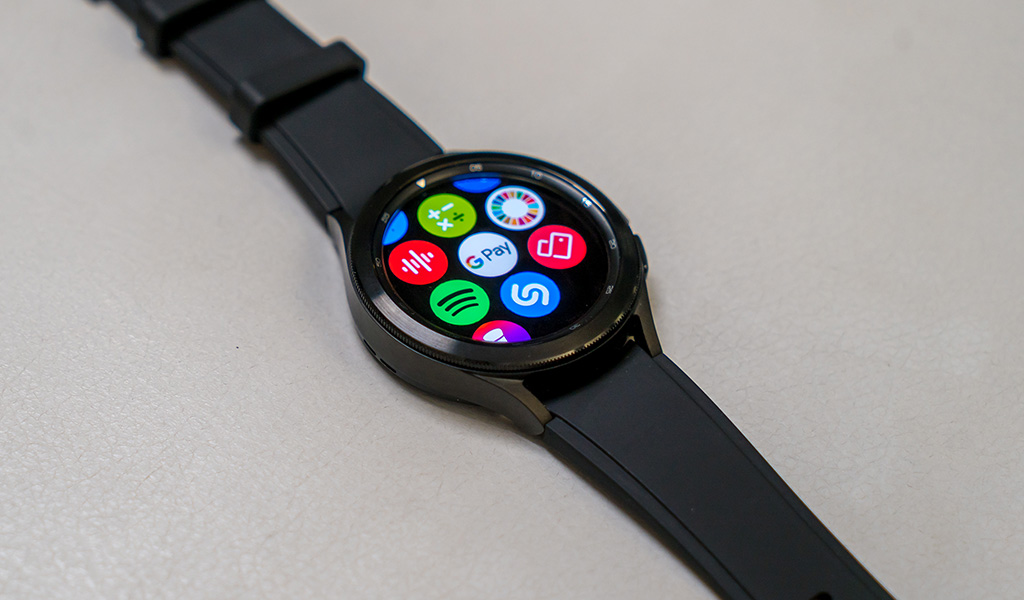
Smartwatches have been slowly getting better at offering true value as both extensions of smartphones and activity trackers with fitness in mind. Smartwatches and fitness trackers aren’t necessarily the same thing, though they may share similar features.
Fitness trackers are meant to be functional devices focused on tracking daily activity, whereas smartwatches are designed to be more multifaceted, with support for apps and, in some cases, wireless network connectivity.
There is an aesthetic and functional distinction between one smartwatch to another, as in how a running watch might be different from an all-encompassing model. Here are some of the best smartwatches available now.
Apple Watch

Apple’s Watch Series 7 is a very modest upgrade from the previous model, but may feel like a bigger leap forward if you’re coming from an older model. The Series 7 retains Apple’s S6 processor, though the bigger differences come on the outside. More rounded corners complement a screen that’s 20% larger, so it fits closer to the watch’s edges. You now also get IP6X dust protection, plus the usual WR50 waterproofing.
Apple didn’t change much on the exercise tracking side, other than adding some extras for cyclists. You still get the same SpO2 sensor to measure blood oxygen on demand, along with the ECG (electrocardiogram) to keep tabs on your heart’s health.
Some of the new features come courtesy of WatchOS 8, like new fitness routines centred on pilates, and mindfulness practices. Not to mention the Wallet app and its newfound support for unlocking compatible doors. Those aren’t specific to the Series 7, but you should expect to have them when you use this watch.
With models that support cellular LTE connectivity, you can make calls, send/receive messages and play music straight from the watch. Non-cellular models can do a lot of things too, save for phone calls, as there is no eSIM functionality. Battery life is basically the same as the Series 6, except you can charge this one much faster. Just remember that the Apple Watch will only work with iOS devices. If you are looking for something more affordable, you can always try the Apple Watch SE or Apple Watch Series 5.
Fitbit Sense
 The Fitbit Sense takes a slightly different turn for the company because of what it includes. While it looks similar to the Versa line of smartwatches, the feature set is different. The Sense has a nice, tiny bit larger AMOLED display—and introduces a new latch mechanism for straps and bands that’s a lot easier to manage. The Versa 3 also uses the same mechanism. It’s just unfortunate you can’t use previous Versa straps with the Sense.
The Fitbit Sense takes a slightly different turn for the company because of what it includes. While it looks similar to the Versa line of smartwatches, the feature set is different. The Sense has a nice, tiny bit larger AMOLED display—and introduces a new latch mechanism for straps and bands that’s a lot easier to manage. The Versa 3 also uses the same mechanism. It’s just unfortunate you can’t use previous Versa straps with the Sense.
The key to this watch is all the sensory technology inside. You get the PurePulse 2.0 sensor for heart rate variability (HRV), electrodermal activity (EDA) and electrocardiogram (ECG), though the latter is still pending approval from Health Canada. There’s even a skin temperature sensor that works during sleep. The SpO2 sensor also works the same way, checking blood oxygen levels while you sleep.
In addition to the onboard microphone for Amazon Alexa and Google Assistant, there’s also a speaker to hear them speak. That speaker also works for phone calls. As long as you’re in range of your paired phone, you can talk to callers directly from the watch. With Android phones, you can use the microphone to verbally respond to messages.
Fitbit also added built-in GPS for better tracking, especially for outdoor activity. Exercise tracking is otherwise much the same, though heart rate tracking is more precise this time around. Fitbit Premium is the subscription-based service you can pay for to get guided programs to a variety of different workouts or goals.
App support, generally speaking, still isn’t extensive, but you might find a good gem when doing a search. There are plenty of options to customize your watch face and menu layout. For music, you get the same kind of integration applies for Spotify and Deezer, though the latter of those two actually allows you to store music for offline listening.
Fitbit rates battery life at five days, though it really depends on what you’re doing with it. Mixed usage will drive it lower for sure. The smartwatch does work with both iOS and Android phones.
Samsung Galaxy Watch4 and Watch4 Classic
 Samsung tried to simplify things by using more conventional naming. In short, the Watch4 Classic is the successor to the Galaxy Watch3, while the Watch4 is based on the previously-named Watch Active models. The Classic sticks with the physical rotating bezel that makes navigating the watch so much easier. The Watch4 makes it touch-sensitive. In both cases, you get a vibrant AMOLED display, plus a new operating system to rely on.
Samsung tried to simplify things by using more conventional naming. In short, the Watch4 Classic is the successor to the Galaxy Watch3, while the Watch4 is based on the previously-named Watch Active models. The Classic sticks with the physical rotating bezel that makes navigating the watch so much easier. The Watch4 makes it touch-sensitive. In both cases, you get a vibrant AMOLED display, plus a new operating system to rely on.
These are the first Samsung smartwatches to run on Google’s Wear OS, as the company moves on from its own Tizen platform. That means better access to more apps, and eventually, direct access to Google Assistant. Bear in mind that Samsung Health takes precedence over Google Fit to track exercise, so it’s not a full Wear OS experience.
You do get the similar waterproofing, so durability isn’t really a problem. There’s a fair bit of tech inside to use, starting with the excellent heart rate monitor, as well as the SpO2 sensor for blood oxygen levels. There is an ECG as well, but it’s not live yet because Health Canada has yet to approve it.
These watches can track up to 90 exercises—six of them automatically—and with built-in GPS, distance and routes are easy to track, too. Sleep tracking also gets better with useful information displayed on the Galaxy Wearable app.
Samsung doubled the watch’s internal storage to 16GB (12GB of which is free to use), which is great for adding apps and watch faces, but also for music. That lets you save Spotify playlists for offline listening directly from the watch by pairing it with headphones. You can also take make and take calls directly from the watch, including the ability to respond to messages.
Garmin Vivoactive 4
 Garmin has always leaned toward building smartwatches that cater to the sportier crowd. The Vivoactive 4 is no exception, though there is a bit of a lifestyle focus here. Unlike Garmin’s Forerunner watches, which are packed with all sorts of features, this one straddles between being a sporty smartwatch and all-purpose activity tracker.
Garmin has always leaned toward building smartwatches that cater to the sportier crowd. The Vivoactive 4 is no exception, though there is a bit of a lifestyle focus here. Unlike Garmin’s Forerunner watches, which are packed with all sorts of features, this one straddles between being a sporty smartwatch and all-purpose activity tracker.
There is a built-in heart rate monitor and GPS, with over 20 sports preloaded onto it. It tracks activity and metrics, like distance, pace and time, and pairs with the Garmin Connect app to take things further. Runners can create their own routes or exercise routine that could include a running component. Garmin also lets you do it inside on a treadmill, using the phone’s data connection to measure distance when not outside.
You don’t have to customize it all. There are workouts to download and other users to glean insight and inspiration from to keep you motivated. It’s also waterproof, so take it swimming when the mood strikes. Garmin also includes an SpO2 sensor for blood oxygen levels.
This watch comes in 45mm size, whereas the Vivoactive 4S is the equivalent at a 40mm size. Garmin rates battery life at up to eight days in most passive use cases, and that cuts down to about 15 hours when GPS is on.
Fitbit Charge 5

This is every bit an activity tracker, but it also increasingly adds the look and feel of a smartwatch. The Charge 5 marks the first time a Fitbit activity tracker comes with a colour scree, plus new sensors. You get the EDA (electrodermal activity) sensor previously introduced in the Sense, plus the SpO2 sensor to measure blood oxygen while you sleep.
There’s even built-in GPS to track distance on runs, walks and hikes. The heart rate monitor is still intact and you can always use it to check your heartbeat. Fitbit also introduced a new feature it calls the “Daily Readiness Score” to track where you stand with your health and fitness. It includes details on your sleep and heart rate variability. You can only access it through a Fitbit Premium subscription, with the first six months being free.
You can also access the same Readiness Score on other Fitbit devices, like the Sense, Versa 3, Versa 2, Inspire 2, and Luxe.
Find more wearables like smartwatches and fitness trackers online at Bestbuy.ca.



Thank you so much introducing the high quality brand of smartwatch here, Garmin Vivoactive 4 its totally name for me
Apple watch is great for productivity!!
I have a Fitbit Versa and like the styling and the long battery life. Would have considered an Apple Watch since I use an iPhone but the extra cost and the reduced battery life dont compensate for features I dont think I’d use regularly (e.g. cell or extra apps). Sometimes something simpler is the better choice.
I bought the Vivoactive 4S a year ago and love it! I mainly use it to track my running, walking, stand up paddle boarding activities, and even yard work!. But I do use the many other health features this watch has to offer. What I love about it is that it fits my wrist perfectly. I usually have a tough time finding the right fit when it comes to smartwatches but the 4S is perfect if you have a small wrist. I also love the fact that it’s so light that you can’t feel it. I highly recommend this watch!
I was going to get the Versa 2 but since google bought Fitbit I am thinking they might make a google Fitbit so I am holding off until then. Hopefully in the near future
You have shared the pretty good experience about the smartwatches. I just wanted know more depth details about the smart watches.
At the moment I am still happy with my normal watch. I find at the moment I don’t need what a smart watch can give me, but this is an article that I will definitely come back to if that changes. There are some good things to think about here.
Really good article. I would like to know what you think about smart watches for children?
I have had two Garmin watches in the past but both have had the plastic wrist band which has broken with use. It would be great if you could replace them without replacing the watch also but I cannot find replacement bands. Can anyone assist? Maybe Garmin can build a more long lasting band?
Scott
Hi Scott, I asked the smart watch team here at Best Buy’s head office and they suggested you can check this link for additional bands for the Fenix line of Garmin watches https://www.bestbuy.ca/en-CA/Search/SearchResults.aspx?query=strapsco%20fenix
if you have a Forerunner 735, you can find additional straps at https://buy.garmin.com/en-CA/CA/p/541225#accessories
If you have a Vivoactive 3 you can look here for more bands https://buy.garmin.com/en-CA/CA/p/571520#accessories
Best Buy will be getting additional Garmin watch bands in the near future as well.
I hope this helps,
Martin
Thanks for the amazing list Martin. In the emerging technical world, everyone is fond of getting a smart watch and I am also one among them. Your post helped me to choose best one out and now I am having my dream watch with me. Once again thanks for the great post.
Hi Martin,
Thanks for the great list. I personally love the Apple series and wish I could have a one for me soon. Also you could consider adding the Sony Series to this list.
Tried to buy a watch at store in Richmond Hill today. Price in the case does not match the sale price on the web site and after waiting patiently for 4 different employees to finish with their existing customer only to see them walk away from me I gave up, left the other items I was going to purchase and left the store. It was not that busy – just complacent and/or lazy I guess. No wonder people are choosing to shop on line more and more.
Hi Jim
Thanks for reaching out with this issue. I have forwarded your problem to our customer service department and they should be reaching out to you soon. I wish you the best for the holidays.
Martin Renaud
Blog Editor-in-chief
I love that the S3 Frontier also lets you use any brand of straps to customize the watch to your style. Theoretically, you could have a strap for each day of the year!
Comments are closed.